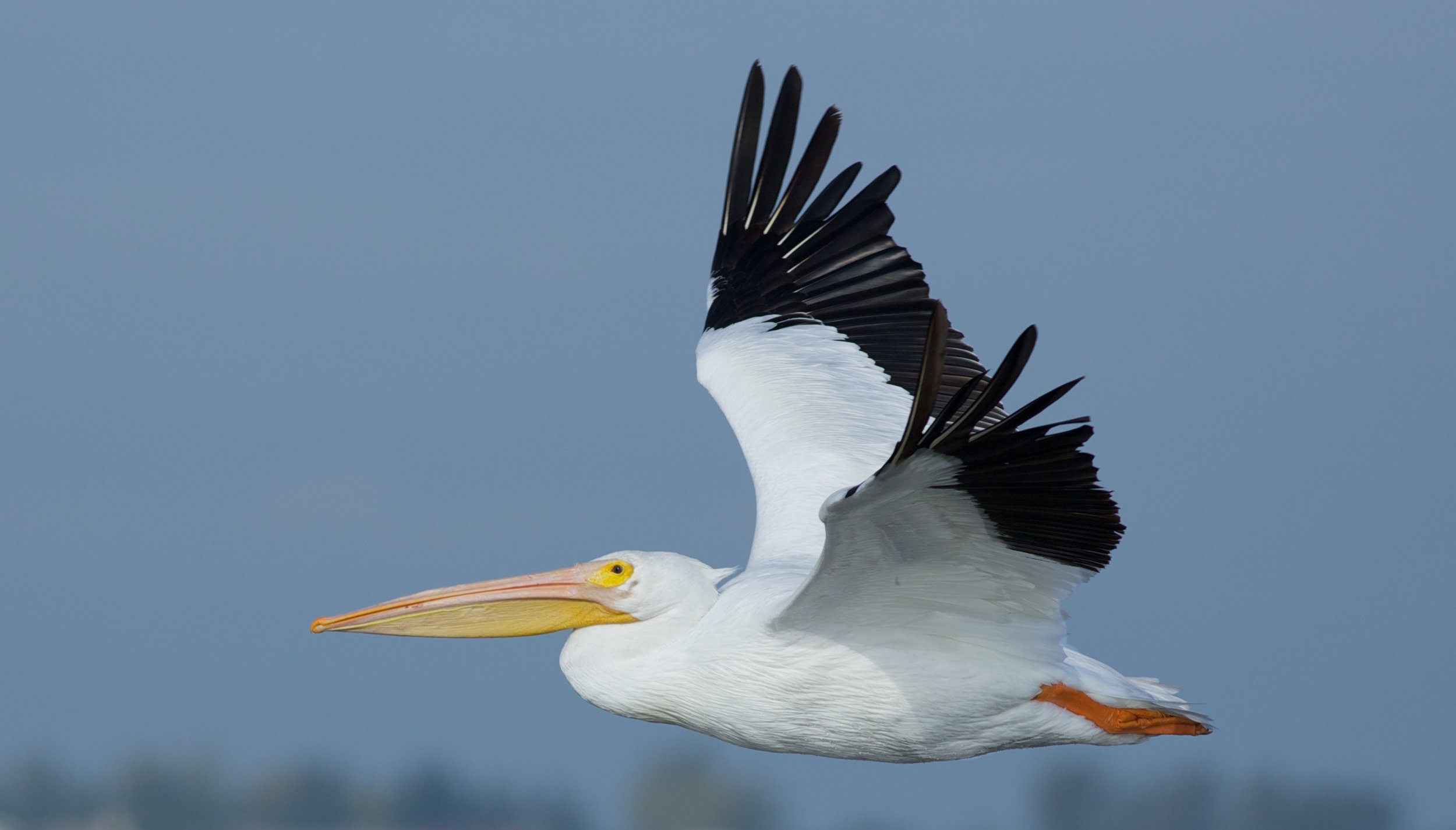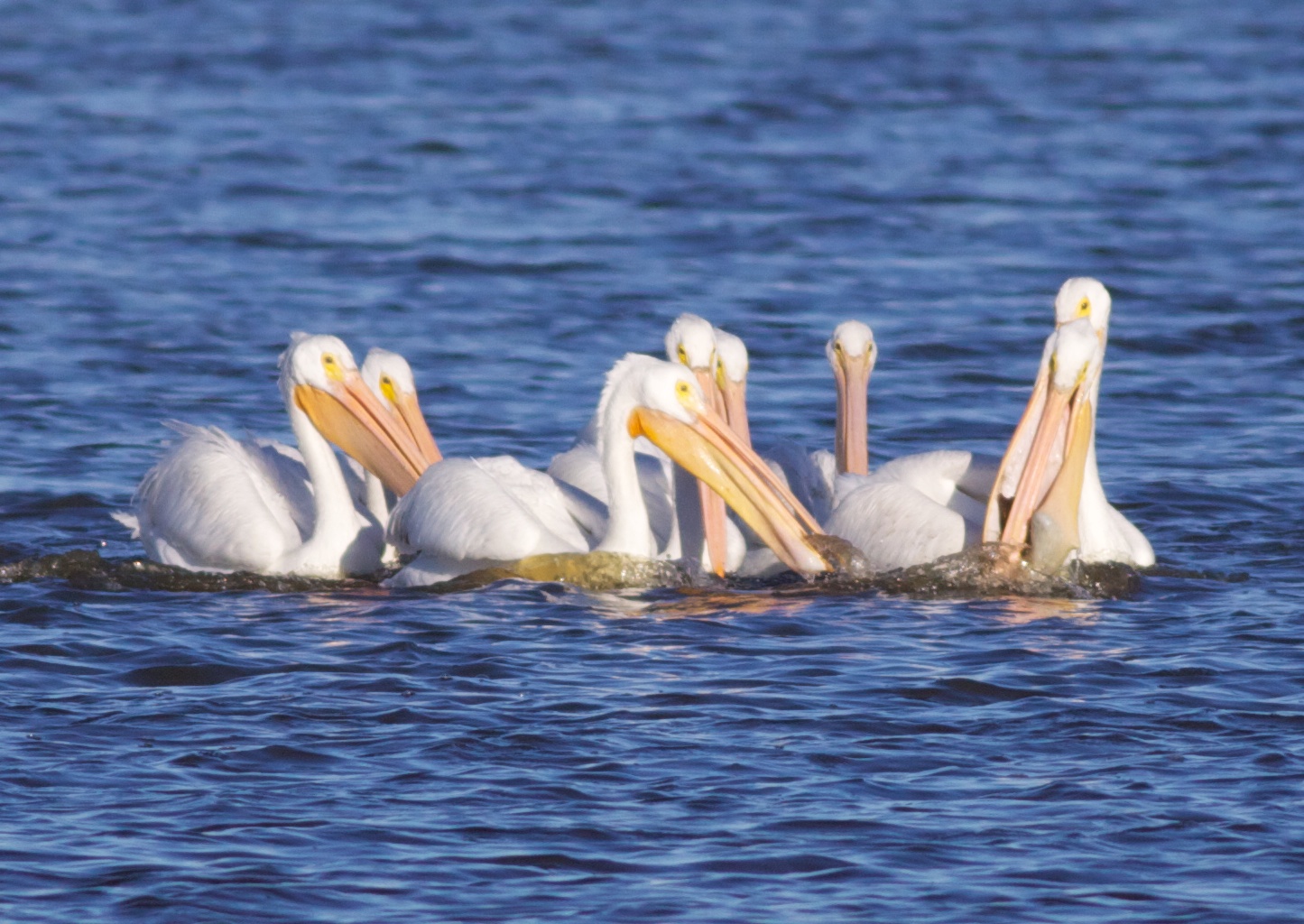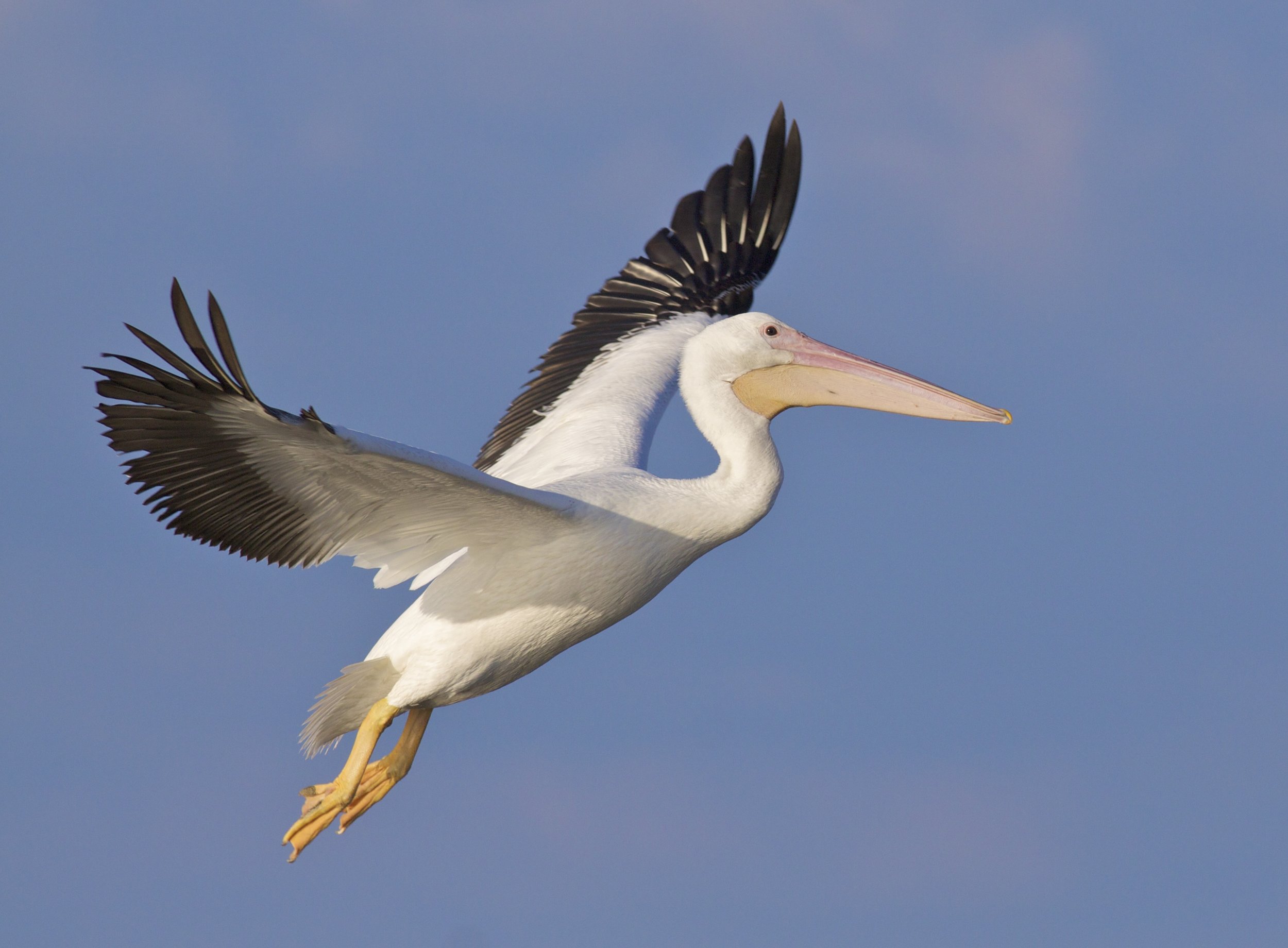If I were a bird, I might choose to be an American white pelican. One of North America's largest flying birds with a wingspan up to 9 feet and weighing up to 30 pounds, the white pelican strikingly floats through the skies at Faville Grove on warm summer days, riding thermals above the Crawfish River. If the American white pelican were a drink, it might be a piña colada—like the pelican in Wisconsin, this festive white drink is seen only in summer; is tipped with a cute umbrella, not unlike the jovial horny knob that adorns breeding male pelicans. In addition, you wouldn't dare have more than one piña colada for fear of overdoing it, and pelicans around Faville Grove exhibit similar constraint, floating by lazily, rocking through the sky and showing off their black wing tips, only to evaporate minutes later, their white bodies fizzling into the hazy sky. This week we saw 150-200 pelicans flying over one of the new restorations...it was enthralling to watch the birds disappear as they floated toward the sun, then flash their white wings in a reflective burst.
Photo by Arlene Koziol
White Pelicans nest in colonies, and are almost always found together in groups—called a pod, pouch, squadron, brief, or scoop. The communal nature of the birds continues as they hunt. On rivers, lakes, and ponds, white pelicans will circle together and gradually enclose this circle, until the minnows they have been chasing are contained in a frenzied cloud and the pelicans can feast on this buffet. In Wisconsin, the most important fish in the diet of pelicans includes gizzard shad and emerald shiners.
Their high protein diet of fish likely allows these birds to reach such enormous sizes, though they won't typically take fish longer than half the length of their beak and minnows are the most common prey item. Unlike the brown pelican, which can be seen along coastal areas of North America diving for prey, the American white pelican only reaches down and scoops just below the surface, and thus the birds use shallow water to their advantage. It's also a myth that pelicans store fish in their pouch on their beak; rather, this is used when they regurgitate fish they've eaten and feed it to their young.
Photo by Arlene Koziol
In studies of pelican activity budgets on wintering grounds, it was found that white pelicans on lakes and rivers spent about 28% of their day fishing and 72% loafing, making a work day just under 7 hours with no added time for meals. Other free-loading pelicans overwintering in the south have discovered catfish aquaculture farms, and these birds were found to spend 4% of their day fishing and 96% loafing, for a work day of just under an hour!
The pelican was a rare sight in Wisconsin for most of the 20th century, and what a delight it is to have this bird back in the state. Breeding in Horicon Marsh and Green Bay since the mid 1990's, the birds we see likely range from Horicon for daily foraging trips to ponds, lakes, and streams. They're also common along the Mississippi River valley.
The biggest causes of mortality for pelicans are being shot, flying into power lines, and getting trapped on fishing line. Traditional breeding grounds are centered on the prairie pothole region of the Midwest and Canada, and damage occurred to the population throughout the 20th century with the continued drainage of wetlands and the advent of DDT. Since the banning of DDT and other environmental regulations, the American white pelican has slowly rebounded continent-wide.
Photo by Arlene Koziol
Breeding birds find islands within wetlands or rivers and place a nest on the ground, usually a few bill lengths from neighboring birds to avoid being pecked. The breeding birds are quite sensitive to human disturbance, and thus remote areas far from human disturbance are common nesting sites. Lacking a brood patch (the patch of bare skin that forms on many birds while they incubate), the pelicans instead incubate with their feet.
It never fails to amuse me when I point out pelicans in the sky, and someone responds “we have pelicans here?” Indeed we do, and how fun it is to watch them forage through the ponds of southern Wisconsin; how fun it would be to loaf as a pelican does.
Written by Drew Harry, Faville Grove Sanctuary land steward
Cover photo Photo by Arlene Koziol








